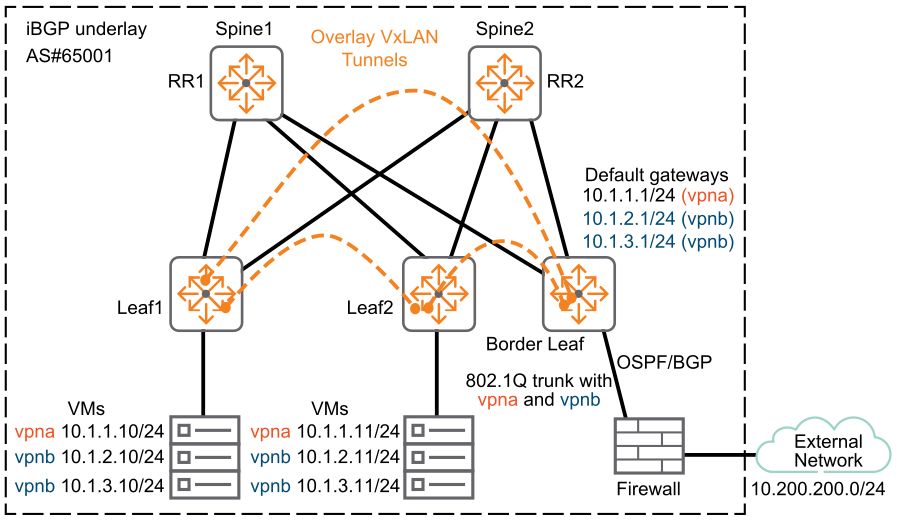Centralized EVPN gateway deployment

The host sends an ARP request to obtain the MAC address of the SVI interface that acts as the gateway, and then sends the Layer 3 traffic to the centralized EVPN gateway.
The local VTEP looks up the matching MAC address table and forwards the traffic to the centralized EVPN gateway through a VXLAN tunnel.
The centralized EVPN gateway removes the VXLAN encapsulation and forwards the traffic at Layer 3. If the destination host is present behind another VTEP, the gateway VXLAN encapsulates the packet again with the destination VNI and forwards the packet to the destination VTEP.
Any return traffic follows the same set of procedures described above.
From release 10.04 onwards, active-gateway must be configured for Centralized gateway deployments also.